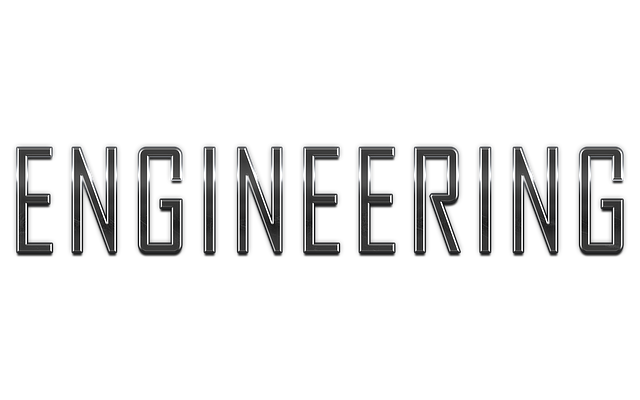When a vehicle is restored from a salvage state to safe operating condition, the process of transferring its title takes on unique legal and administrative considerations. This article demystifies the steps involved in transferring a rebuilt car title, ensuring compliance with state regulations and facilitating future insurance coverage. We’ll explore the intricacies of a rebuilt title transfer, from the necessary paperwork to the stringent inspection requirements set by the Department of Motor Vehicles (DMV). Understanding how to transfer a rebuilt title is not just about legality; it’s also about making an informed decision when selling a car with a rebuilt title. By adhering to the best practices and navigating the specifics of salvage-to-rebuilt car transfers, vehicle owners can confidently return their cars to the roads, secure in the knowledge that they have met all necessary criteria for safety and insurability.
Understanding Rebuilt Title Transfers: A Legal Perspective

When contemplating the transfer of a rebuilt title, it is imperative to navigate the legal framework that governs such transactions. The process commences with obtaining the original salvage title, which serves as documentation that the vehicle was once deemed a total loss due to damage or destruction. To transition from a salvage title to a rebuilt one, a comprehensive restoration must be executed, ensuring all components are restored to operational standards and meet safety regulations. This meticulous process culminates in a mandatory rebuilt vehicle title inspection, which verifies that the car has been refurbished according to state-specific guidelines. The results of this inspection are critical, as they confirm the vehicle’s readiness for registration and road use.
Post-inspection, applicants must engage with the Department of Motor Vehicles (DMV) to complete the rebuilt title transfer paperwork. This paperwork typically includes a detailed application, proof of ownership, a bill of sale, and evidence that the vehicle has passed the requisite inspection. Additionally, a notarized affidavit may be required, attesting to the vehicle’s restoration history. The specific requirements can vary by state, necessitating a thorough understanding of local regulations. Once all paperwork is submitted and fees are paid, the DMV will issue a rebuilt title. It is only with this title in hand that the car can be legally transferred, whether for personal use or for sale. Prospective buyers should be informed of the vehicle’s history, as selling a car with a rebuilt title requires transparency to maintain trust and legality. Moreover, securing insurance for a vehicle with a rebuilt title may involve additional steps, so it is advisable to liaise with insurance providers early in the process to ensure appropriate coverage. Understanding these legal perspectives and procedural nuances is crucial for anyone involved in the transfer of a rebuilt title.
Step-by-Step Guide to Rebuilt Title Transfer Paperwork

When navigating the process of transferring a rebuilt title, it’s imperative to follow a detailed sequence of steps to ensure legal compliance and future insurability. The journey from a salvage title to a rebuilt one involves meticulous documentation and adherence to state-specific regulations. Initially, the vehicle owner must acquire the original salvage title from the Department of Motor Vehicles (DMV) or equivalent authority. This is the foundational document that recognizes the car as a total loss due to damage, theft, or prior accidents. Subsequently, all necessary repairs, which align with the state’s safety and environmental standards, must be performed by a certified mechanic or body shop.
Once the rebuild process is complete, the vehicle undergoes a thorough inspection to confirm that it meets the rebuilt title inspection requirements set forth by the state. This inspection often includes a check of the Vehicle Identification Number (VIN) to ensure it’s not being used for fraudulent purposes and that all parts integral to the car’s safety are functioning correctly. Upon passing this inspection, the owner can proceed with the rebuilt title transfer paperwork. This involves submitting an application for a rebuilt title to the DMV, along with proof of the salvage title acquisition, evidence of the completed repairs, and the successful inspection results. Additional documentation may be required, such as a notarized statement detailing the cause of the vehicle’s previous total loss status. It’s essential to consult the specific requirements for each state, as they can vary in terms of the necessary paperwork and procedures for selling a car with a rebuilt title and completing the title transfer for salvage-to-rebuilt cars. Once all documentation is submitted and approved, the DMV will issue a rebuilt title, marking the successful conclusion of the process and enabling the vehicle owner to register and insure their vehicle appropriately. Prospective buyers should be aware that selling a car with a rebuilt title requires transparency and comprehensive disclosure to ensure a legal transfer of ownership and to maintain the vehicle’s insurability.
Best Practices for Selling a Car with a Rebuilt Title

When selling a car with a rebuilt title, it’s imperative to navigate the process with diligence and transparency. Potential buyers should be informed of the vehicle’s history, as this affects its value and insurability. The first step in transferring a rebuilt title is to ensure all salvage-to-rebuilt paperwork has been properly completed and filed with the appropriate state DMV. This paperwork typically includes proof that the car was deemed a total loss, documentation of the repairs made, and evidence that the vehicle has passed a rigorous rebuilt title inspection, which verifies its roadworthiness. The inspection must meet the specific requirements set forth by the state, focusing on both structural integrity and operational safety.
Transparency is key when selling a car with a rebuilt title. Sellers should disclose the vehicle’s history to prevent future legal complications. It’s advisable to provide a copy of the rebuilt title, along with any inspection reports or other documentation that supports the vehicle’s compliance with state regulations. Additionally, sellers must accurately represent the condition and history of the car during negotiations. To facilitate a smooth transaction, it’s also recommended to consult with insurance providers ahead of time, as they can provide valuable insights into how the rebuilt title might affect coverage options. Understanding the nuances of selling a car with a rebuilt title not only ensures compliance with legal requirements but also helps establish trust and credibility with potential buyers.
Navigating Title Transfer for Salvage-to-Rebuilt Cars: What You Need to Know

When transitioning a vehicle from a salvage title to a rebuilt title, it’s imperative to familiarize oneself with the specific requirements and procedures set forth by the state in which the vehicle is registered. The first step involves obtaining the original salvage title; this document serves as proof of ownership and that the vehicle was declared a total loss at some point. Once in possession of the salvage title, the vehicle must undergo meticulous repairs to restore it to safe operating standards. It’s crucial to ensure all parts replaced meet manufacturer specifications and that any frame or structural damage is professionally repaired.
After the necessary repairs are complete, the next phase is the rebuilt title inspection. This process varies by state but generally includes a thorough assessment by an authorized inspector to verify the vehicle’s roadworthiness and compliance with safety standards. Upon successful completion of the inspection, obtaining the rebuilt title is the subsequent priority. The paperwork for this transfer typically includes the completed inspection form, a copy of the original salvage title, proof of ownership, and any applicable fees. This paperwork must be submitted to the DMV or equivalent state agency. It’s essential to adhere to these steps as outlined by local regulations, as failure to do so could result in legal complications or difficulties when registering or selling the vehicle in the future. Sellers should be transparent about a car’s history and ensure that all documentation is in order to facilitate a smooth transfer of a rebuilt title. Proactive communication with an insurance provider is also advisable, as they may have specific guidelines or coverages tailored for vehicles with rebuilt titles. This proactive approach not only ensures compliance but also safeguards the financial investment in the vehicle.
Meeting Rebuilt Title Inspection Requirements for Roadworthiness and Insurance

When transferring a rebuilt title, adherence to specific roadworthiness and insurance requirements is paramount. The first step in the process is passing a rigorous rebuilt vehicle title inspection. This inspection ensures that the car meets all safety standards and regulatory compliance for road use after its restoration. The exact requirements can vary by state, but generally include a thorough evaluation of the vehicle’s mechanical systems, structural integrity, and overall condition. Once passed, this inspection serves as proof to both insurance companies and state authorities that the rebuilt vehicle is safe to be back on the road.
In parallel with ensuring the car’s roadworthiness, one must navigate the rebuilt title transfer paperwork meticulously. This involves acquiring the original salvage title and submitting it to the Department of Motor Vehicles alongside evidence of the completed inspection. Additional documentation may include a detailed description of the repairs made, a bill of sale, and identification of both the seller and buyer. The process for selling a car with a rebuilt title follows similar steps, with the seller responsible for providing potential buyers with all necessary paperwork and disclosures as required by state law. It’s imperative to handle this paperwork accurately to avoid delays or legal complications. Moreover, securing insurance for a rebuilt vehicle requires transparent communication with insurers to ensure coverage aligns with the car’s history. Insurance providers will consider the rebuilt title and may factor in the vehicle’s salvage history when determining premiums. Therefore, it’s advisable to engage with insurance carriers early in the process to explore options and understand the implications of the car’s past. Understanding how to transfer a rebuilt title involves not only understanding the legal framework but also the practical steps involved in making a vehicle roadworthy and insurable again after it has been deemed a salvage title vehicle.
When transferring a rebuilt car title, adherence to state regulations and meticulous documentation are paramount. The process of obtaining a rebuilt title involves a series of steps that include ensuring the vehicle meets all safety standards and legal criteria post-repair. This article has outlined the critical aspects of this process, from understanding the legal framework to navigating the paperwork for how to transfer a rebuilt title, and the necessary inspections for roadworthiness and insurance purposes. For those looking to sell their car with a rebuilt title, it’s imperative to follow best practices to ensure a smooth transaction. Prospective buyers will likely appreciate a thorough understanding of the vehicle’s history and the steps taken to achieve a rebuilt title. By following the guidelines provided for title transfer from salvage to rebuilt status, car owners can effectively reintegrate their vehicles into road traffic while maintaining compliance with state laws. Remember to engage with insurance providers early to address any challenges in obtaining coverage for your rebuilt vehicle. With these steps in mind, transitioning a rebuilt car title is a manageable process that leads to a fully operational and insurable vehicle.



